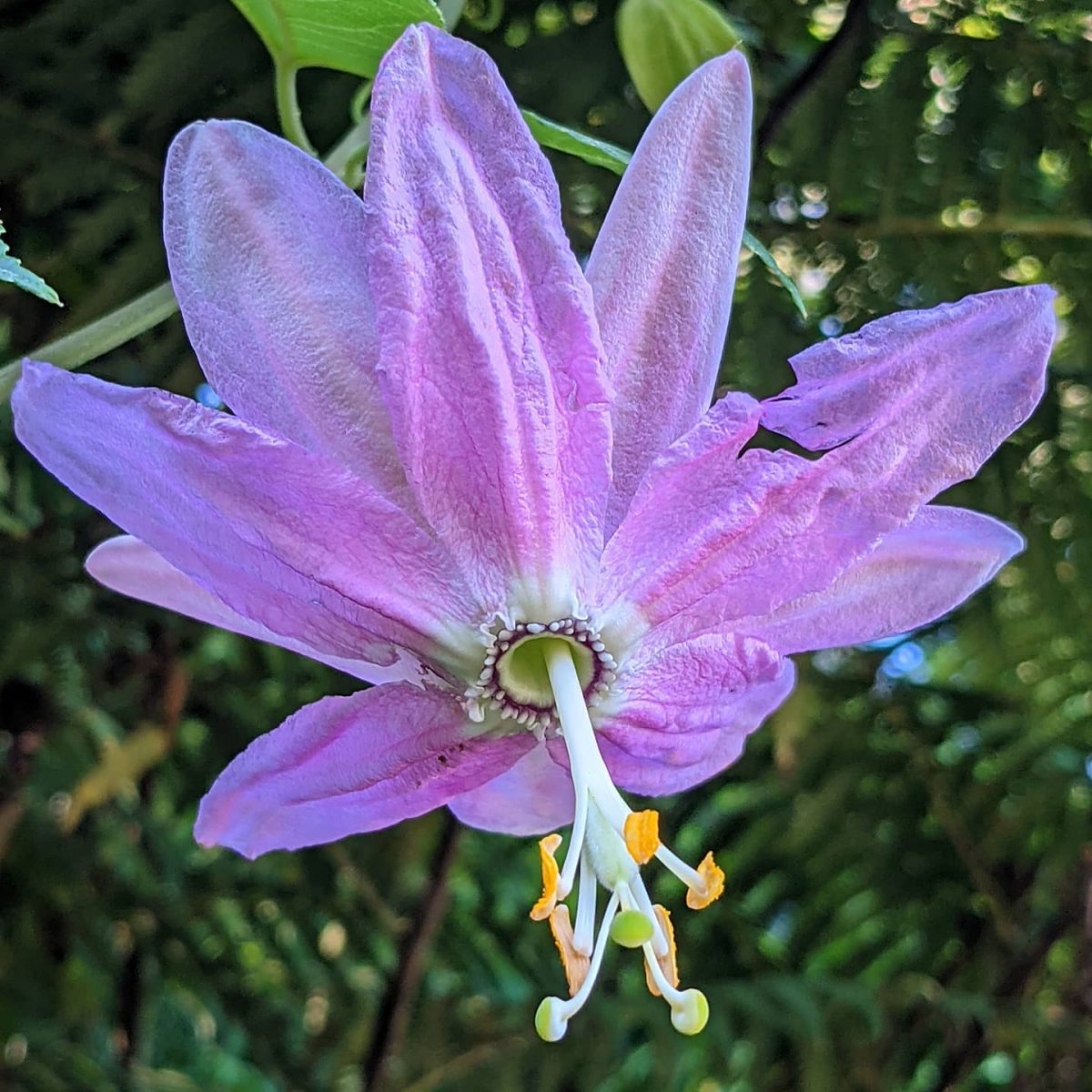Banana Passionfruit (Passiflora tarminiana), an expert climber with edible fruit.
Formerly planted more widely for the fruit (although this is often described as somewhat insipid), Banana Passionfruit is now principally used in Australia as a cool climate rootstock for preferred varieties of Black Passionfruit. Its showy flowers have also been treated as a minor ornamental selection, and indeed the earliest Australian herbarium record for the species is a cultivated specimen collected at the Sydney and accessioned here in Melbourne at the NHV.
As a rootstock, Banana Passionfruit is prone to resprouting, outliving the grafted plant’s years of productivity and succeeding it to produce its own undesired fruit. Dropped down slopes or eaten by birds, foxes and possibly native mammals, that untended fruit goes on to spread the seed to adjacent forest. The plant is now considered to be a rapidly spreading environmental weed of south-eastern rainforest areas, smothering understorey vegetation and often ascending high up the trunks of mature canopy trees.
The first record of naturalised Banana Passionfruit in Australia was made in NSW in 1948, ‘in closed forest near road’ in O’Sullivans Gap, near Bulahdelah some ways north of Newcastle. This describes a typical presentation of the species in Australia, climbing tall native forest trees along marginal roadways.
The first Victorian records date to the 1970s, collected in Kew, Vermont, Sherbrooke Forest and Lakes Entrance.
The photographed plants are part of a long-established population along the Selby-Aura Rd east of Belgrave, where previous observation records date to the 1990s.
View Original Post on Instagram
Search for information about Passiflora tarminiana in the Flora of Victoria
View information and occurrences of Passiflora tarminiana on the Atlas of Living Australia










